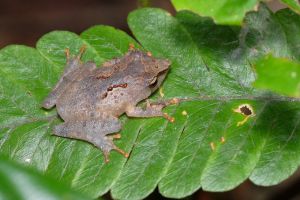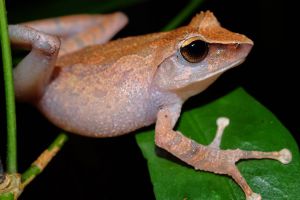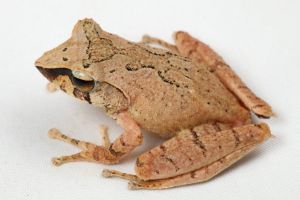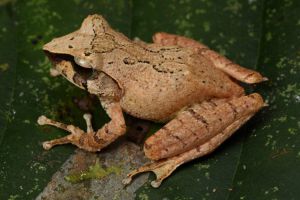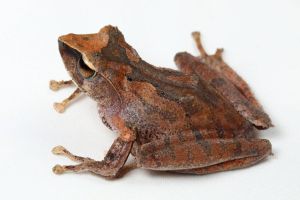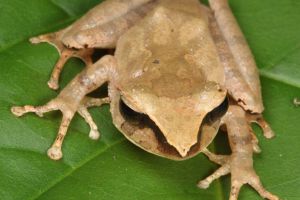
Frogs of Borneo

Frogs of Borneo

Frogs of Borneo

Frogs of Borneo

Frogs of Borneo

Frogs of Borneo

Frogs of Borneo

Frogs of Borneo

Frogs of Borneo

Frogs of Borneo

Frogs of Borneo
Bornean Families
Philautus:
ingeri
Philautus ingeri is one of the larger species in the genus Philautus. It grows up to 36 mm snout–vent length in males and to 50 mm SVL in females. The type locality is mossy forest at Camp 3, Gunung Mulu, Sarawak, at approximately 1300 m a.s.l.
The head is slightly longer than broad. The snout is pointed, depressed, and projecting in profile. The canthus rostralis is angular in cross-section, the lores below it are nearly vertical. The tympanum is visible. Fingers terminate with broad oval disks and have rudimentary webbing; toes are more webbed, especially the third and fifth are completely webbed. An outer metatarsal tubercle is absent. The limb are relatively long. The heels each bear a calcar spur (a fleshy conical tubercle).
The dorsal skin is shagreened and has scattered tubercles—especially on eyelids and limbs. A curved supratympanic ridge extends to the arm. Belly and underside of thighs areolate.
Color brown above, often with a dark interorbital triangle merging into a lyre-shaped mid-dorsal mark and dark limb bars. A broad black canthal stripe reaches the eye; dark blotch are located below the eye. Sometimes the supratympanic ridge is accentuated by a dark stripe below. The throat and belly are cream with fine black speckling; groin pale with brown stippling. The iris is gold in the upper third, dark brown below; the two colors are sharply divided. Note the slightly different morphology and coloration in the juvenile specimen in the image gallery.
The sharp-edged nose, color pattern of the iris, and the dark band between eye and nose make this an easy to identify frog.
The species seems to be restricted to forests at higher levels of elevation, ranging from 1300–1500 m asl. Inger et al. (2017) described the call as a series of five to thrirteen tapping notes. Reproduction most likely is via directly developing embryos but still needs to be corroborated.
Version tracking
-
17.10.2025
updated
